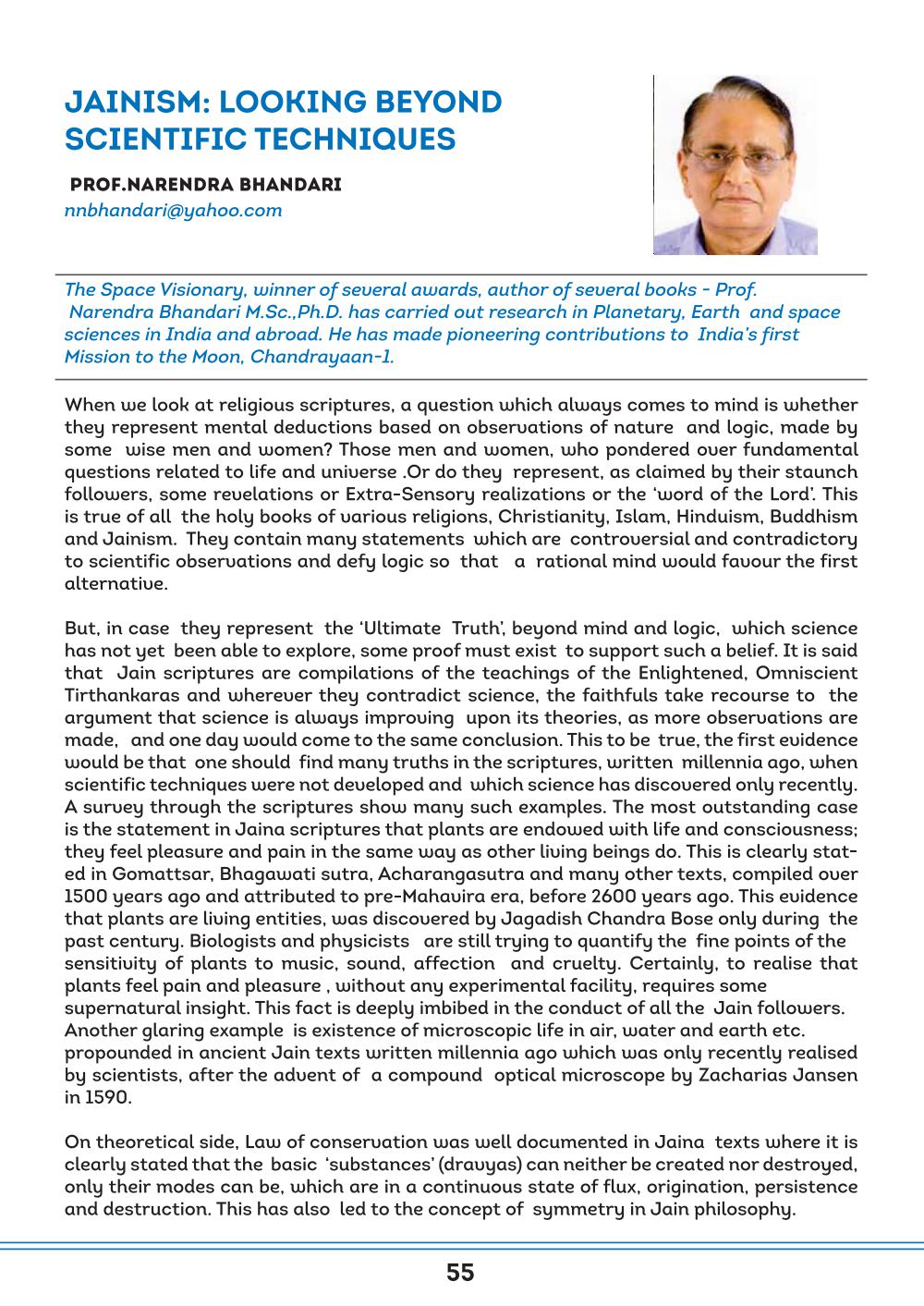________________
JAINISM: LOOKING BEYOND SCIENTIFIC TECHNIQUES
PROF.NARENDRA BHANDARI
[email protected]
The Space Visionary, winner of several awards, author of several books - Prof. Narendra Bhandari M.Sc., Ph.D. has carried out research in Planetary, Earth and space sciences in India and abroad. He has made pioneering contributions to India's first Mission to the Moon, Chandrayaan-1.
When we look at religious scriptures, a question which always comes to mind is whether they represent mental deductions based on observations of nature and logic, made by some wise men and women? Those men and women, who pondered over fundamental questions related to life and universe.Or do they represent, as claimed by their staunch followers, some revelations or Extra-Sensory realizations or the 'word of the Lord. This is true of all the holy books of various religions, Christianity, Islam, Hinduism, Buddhism and Jainism. They contain many statements which are controversial and contradictory to scientific observations and defy logic so that a rational mind would favour the first alternative.
But, in case they represent the 'Ultimate Truth, beyond mind and logic, which science has not yet been able to explore, some proof must exist to support such a belief. It is said that Jain scriptures are compilations of the teachings of the Enlightened, Omniscient Tirthankaras and wherever they contradict science, the faithfuls take recourse to the argument that science is always improving upon its theories, as more observations are made, and one day would come to the same conclusion. This to be true, the first evidence would be that one should find many truths in the scriptures, written millennia ago, when scientific techniques were not developed and which science has discovered only recently. A survey through the scriptures show many such examples. The most outstanding case is the statement in Jaina scriptures that plants are endowed with life and consciousness; they feel pleasure and pain in the same way as other living beings do. This is clearly stated in Gomattsar, Bhagawati sutra, Acharangasutra and many other texts, compiled over 1500 years ago and attributed to pre-Mahavira era, before 2600 years ago. This evidence that plants are living entities, was discovered by Jagadish Chandra Bose only during the past century. Biologists and physicists are still trying to quantify the fine points of the sensitivity of plants to music, sound, affection and cruelty. Certainly, to realise that plants feel pain and pleasure, without any experimental facility, requires some supernatural insight. This fact is deeply imbibed in the conduct of all the Jain followers. Another glaring example is existence of microscopic life in air, water and earth etc. propounded in ancient Jain texts written millennia ago which was only recently realised by scientists, after the advent of a compound optical microscope by Zacharias Jansen in 1590.
On theoretical side, Law of conservation was well documented in Jaina texts where it is clearly stated that the basic 'substances' (drauyas) can neither be created nor destroyed, only their modes can be, which are in a continuous state of flux, origination, persistence and destruction. This has also led to the concept of symmetry in Jain philosophy.
55
